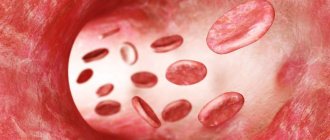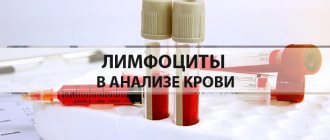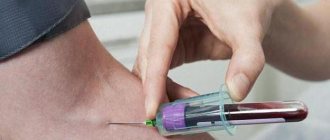Blood test for vitamin D
It is a mistake to consider vitamin D as a substance needed exclusively by young children. Cholecalciferol or vitamin D3 is necessary for a person throughout his life. This is a unique substance that we can get from different sources: sunlight, certain foods, active supplements, medications. Most people are vitamin D deficient but are being treated for conditions that present with similar symptoms. To verify the cause of poor health, it is necessary to find out the level of cholecalciferol in the blood.
Can there be a vitamin D deficiency in the summer?
To keep Vitamin D levels normal, you need to regularly bask in the sun for 15 to 30 minutes during the daytime, all year round, twice a week. Remember that in cloudy weather or in the shade, UV rays only partially pass through, and practically do not pass through glass and sunscreen with a protection factor of 8SPF.
Vitamin D, which your body needs so much, has a half-life of 15 days. This means that you cannot get it with interest for the whole year in the summer or during vacation. After a long winter, most people in Russia are deficient in vitamin D. The situation is this: your body has been deficient in vitamin D for 6 months (autumn and winter). Such a deficiency cannot be replenished in a few sunny days. That is why there can be a shortage even in the middle of summer.
Vitamin D is fat soluble. If you have intestinal diseases associated with poor absorption of fatty foods, or are overweight, this may cause an increased need for vitamin D. Of course, obesity in itself does not affect the skin’s ability to synthesize vitamin D. The pattern is this: the more subcutaneous fat , the more it captures vitamin D and reduces its entry into the blood.
You can check your vitamin D level tomorrow. Place your order on the website now with a 50% discount. If the results of the tests reveal that you have a deficiency or insufficiency of vitamin D, then according to the recommendations presented in the clinical guidelines “Vitamin D deficiency in adults: diagnosis, treatment and prevention”, treatment can last more than 2 months with increased doses of drugs containing vitamin D. This way you can raise and maintain it normal.
How to prepare
It is not necessary to donate blood on an empty stomach, but at least four hours must have passed since your last meal. 12 hours before, you should give up fatty foods, don’t drink alcohol, and two hours before, don’t drink tea or coffee, and don’t smoke. You are allowed to drink still water.
Try not to be nervous: our blood reacts sensitively to our emotional state. Before entering the laboratory, calm down, sit for 15 minutes, and relax.
If you take vitamin D supplements, the study will be biased. To accurately assess the concentration, you need to stop taking it three to four days before the test.
What happens in the body when there is a lack of vitamin D?
The main symptoms of vitamin D deficiency are:
- Bad mood;
- prostration;
- discomfort in bones and muscles;
- decreased visual acuity;
- increased sweating;
- frequent colds and acute respiratory viral infections.
The World Health Organization has initiated studies that confirm an increased risk of cancer of the breast, colon, prostate, endometrium, ovary, esophagus, stomach, pancreas, bladder, kidney due to vitamin D deficiency. Symptoms of deficiency are not obvious, the likelihood of deficiency is high, and the consequences could be significant.
The main task of vitamin D is to help absorb calcium, magnesium and phosphorus, which prevents bone softening. When there is a lack or deficiency of vitamin D, most of the calcium and phosphorus that the body gets from food or supplements is not absorbed, which can lead to brittle and soft bones.
Vitamin D affects the renewal of bone tissue. When calcium, phosphorus, and magnesium from food and supplements are not absorbed to maintain proper levels in the blood, the body begins to release calcium from the bones into the blood. Simply put, the body begins to sacrifice bones. In young people, the limbs are most often affected, and in older people, the spine is most often affected. This creates the risk of fractures. The approximate period for bone tissue renewal is 10 years. This means that if you are currently deficient in vitamin D, you may not feel its effects on your bones for several years.
When you take a calcium level test, the results may be normal. However, the process of softening the bones may already be underway. Chronic vitamin D deficiency can lead to the development of osteoporosis. A study by the British Medical Association demonstrated that normalizing vitamin D levels reduced the number of fractures of all locations by 22%, and fractures of the hip, wrist, forearm or vertebrae by 33%.
The role of vitamin D in life processes
Until recently, it was believed that vitamin D was necessary for the body to fully absorb calcium. For this reason, the substance was prescribed to young children to prevent rickets. Adults were recommended to take the drug for osteoporosis, joint injuries and bone fractures. Scientists have recognized that the importance of the substance for human life has long remained underestimated. The fat-soluble compound affects all physiological processes, slows down the aging process, and increases the body's resistance to colds. Vitamin D deficiency limits physical activity and is a serious threat to human health.
Groups at risk of vitamin D deficiency
According to the results of a study by the Federal State Budgetary Institution “Federal Research Center for Nutrition and Biotechnology,” up to 97% of Russians experience vitamin D deficiency, depending on the region and health status
Russia is not the sunniest country. Most regions, for example, Moscow, St. Petersburg, Nizhny Novgorod, have a relatively small number of sunny days. This prevents your skin from getting the right amount of sunlight to produce the required amount of vitamin D.
You can only get 20-30% of your daily requirement for vitamin D from your daily diet. Additionally, the risk of deficiency becomes even more likely if you are allergic to milk or fish, lactose intolerant, or if you are a vegetarian.
There are five main risk groups for vitamin D deficiency.
1. Office workers and people who spend most of the day indoors.
This category of people is not exposed to the sun most of the day, which means that the skin cannot produce vitamin D in the amount necessary to maintain vitamin D levels of at least 30 ng/ml. In addition, many companies have a dress code - arms and legs are covered and even on sunny days the light does not fall on them. If you spend most of your sunny days indoors, you might want to check your vitamin D levels.
Get tested and bring the results to the endocrinologist. If necessary, he will prescribe treatment for you.
You can take a set of tests for vitamin D and calcium deficiency with a 50% discount. The analysis will be ready within 1 day. You will receive the results by email as soon as they are ready.
2. Overweight people.
As we have already said, most of the population has insufficient levels of vitamin D, and overweight people require 2-3 times more to maintain normal levels. This is due to the fact that vitamin D is fat soluble and can be stored in those fat deposits instead of performing its functions. It’s easy to conclude that overweight people should pay attention to their vitamin D levels. By learning about vitamin D deficiency and correcting it to normal, a person will not immediately become slim, but will avoid brittle bones, muscle weakness, calcium deficiency and other consequences.
More and more studies show that vitamin D can play a role in the prevention and treatment of diabetes mellitus types 1 and 2, impaired glucose tolerance and insulin resistance, acute respiratory infections and acute respiratory viral infections, inflammatory bowel diseases and other pathologies.
3. People over 50 years old.
With age, the production of vitamin D by the skin decreases and the absorption of fat in the intestines deteriorates (we remind you that vitamin D is fat-soluble).
Studies have confirmed that increasing vitamin D to normal levels leads to a significant reduction in falls and fractures in older adults. For example, people over 65 fell 72% less often after 5 months of treatment for vitamin D deficiency. This is because muscle weakness due to insufficient vitamin D levels leads to imbalance.
The manifestation of a long-term lack of vitamin D is the possible development of osteoporosis. For a patient with osteoporosis, even minor injuries can result in a fracture. Osteoporosis is most often associated with insufficient calcium intake, but insufficient vitamin D contributes to osteoporosis by reducing the absorption (absorption) of calcium. If vitamin D levels are normal, bone strength is maintained. This greatly helps prevent osteoporosis in older people.
It is important to note that in the presence of an osteoporotic fracture, the prevalence of vitamin D deficiency can be as high as 100%.
Don’t wait for your parents and grandparents to be prescribed a set of vitamin D and calcium tests by your therapist. Add them as patients in your personal account and order an analysis for them. You can order an analysis even if they are located in another city. Your family will only have to come to the medical center of your choice and take a comprehensive test for vitamin D and calcium deficiency.
4. Women during menopause and postmenopause.
Healthy bone is constantly being remodeled. During menopause, the balance between these processes changes. As a result of this imbalance, the bones lose more calcium, phosphorus and magnesium than they absorb. Therefore, the usual lifestyle, within which there was enough vitamin D to maintain the necessary balance of calcium, phosphorus and magnesium, may require changes. At the same time, in Russia, 74-83.2% of postmenopausal women have a vitamin D level of less than 30 ng/ml (insufficient level).
As we have already said, long-term vitamin D deficiency can lead to the development of osteoporosis. Hormone therapy with estrogen and progesterone may slow the onset of osteoporosis. Several medical groups and professional societies support the use of HRT (hormone replacement therapy) as an option for women who are at increased risk of osteoporosis or fractures. Every woman should discuss this issue with her doctor.
One study found a 60% reduction in overall cancer risk among 1,179 healthy postmenopausal women treated with vitamin D and calcium compared with placebo over a 4-year follow-up period. Optimal levels of 25(OH)D in serum for the prevention of cancer, according to research, are 40-60 ng/ml (100-150 nmol/l).
5. Pregnant women and those who are thinking about becoming a mother.
In a study, Belgian scientists found that 86% of pregnant women had vitamin D levels below the normal level of 30 ng/ml. It is also known that the level of vitamin D of mother and child is directly related and has a high degree of dependence.
In the first and second trimesters, most of the organs and systems of the body are formed and formed in the fetus. In the third trimester, skeletal calcification begins, which significantly increases the need for calcium. And calcium, as you and I already know, is better absorbed when the level of vitamin D in the blood is normal. Therefore, women during pregnancy and breastfeeding are recommended to maintain the level of D 25-OH in the blood more than 30 ng/ml. It is not necessary to give vitamin D to infants without a doctor's prescription - it is enough for the mother to maintain it at normal levels.
Most multivitamins for pregnant and breastfeeding women contain less vitamin D (0-500 IU, average 305 IU) and calcium (0-200 mg, average 80 mg) than needed. Some experts recommend that pregnant and breastfeeding women take at least 800-1000 IU of vitamin D per day as a preventive measure, of course, discussing the dosage with your doctor. If a deficiency is detected, the dosage may be significantly higher (1500-4000 IU/day).
Results and prognosis of treatment
Bone pathologies that develop in childhood or adolescence are difficult to correct. However, if you follow your doctor's instructions regarding taking the drug and doing physical therapy, you can significantly improve your health by strengthening bone tissue, muscles and ligaments. Over time, posture improves, neuroses disappear, and immunity increases. Patients suffer less from colds, and their resistance to diseases during seasonal infections increases.
To prevent vitamin D deficiency, it is important to eat right and get outdoors more often. The vitamin is found in a small number of foods and is absorbed in the presence of fat. The maximum content is observed in salmon, herring, mackerel, and beef liver. The substance is present in small quantities in dairy products (sour cream, cheese), egg yolk, and mushrooms.
Vitamin D deficiency is found, to one degree or another, in the majority of urban residents (only 10–15% do not need additional intake of the substance), in almost all women after the cessation of the menstrual cycle. It is important to know that for maximum absorption of the component and normal development of bone tissue, the body must have a sufficient amount of calcium, vitamin K, and protein.
How to Monitor Vitamin D Levels
The 25-OH vitamin D test is the best way to monitor vitamin D. It reflects the amount of the vitamin your skin produces and what you get from food and supplements. Once you receive the test result, you can compare it with the recommended standards and decide whether to take supplements or not. If Vitamin D is normal, you will know that it is worth maintaining your normal lifestyle.
The norm of vitamin D 25-OH is determined by the Russian Association of Endocrinologists. The following indicators are distinguished:
- less than 20 ng/ml - deficiency
- less than 30 ng/ml - insufficiency
- from 30 to 100 ng/ml is an adequate level.
Residents of big cities lack sun at any time of the year.
| Interpretation of 25(OH)D concentrations accepted by the Russian Association of Endocrinologists | ||
| Classification | Blood 25(OH)D level ng/ml (n/mol/l) | Clinical manifestations |
| Severe vitamin D deficiency | <10 ng/ml (<25 n/mol/l) | Increased risk of rickets, osteomalacia, secondary hyperparathyroidism, myopathy, falls and fractures |
| Vitamin D deficiency | <20 ng/ml (<50 n/mol/l) | Increased bone loss, secondary hyperparathyroidism, falls and fractures |
| Vitamin D deficiency | ≥20 and <30 ng/ml (≥50 and <75 nmol/l) | Low risk of bone loss and secondary hyperparathyroidism, neutral effect on falls and fractures |
| Adequate Vitamin D Levels | ≥30 and <30 ng/ml* (≥75 nmol/l) | Optimal suppression of parathyroid hormone and bone loss, reducing falls and fractures by 20% |
| Levels with Possible Vitamin D Toxicity | >150 ng/ml (>375 nmol/l) | Hypercalcemia, hypercalciuria, nephrocalcinosis, calciphylaxis |
Doctors recommend including sources of vitamin D in your diet or taking supplements. Most vitamin D is found in foods such as fatty fish and fish oil. It is also found in beef liver, cheese, egg yolks and some mushrooms.
You should also be in the sun regularly, but remember, it can be harmful due to UV rays.
| Sources of vitamin D in food | |
| Natural food sources | ME vitamin D (D2 or D3) |
| Wild salmon | 600–1000 ME per 100g |
| Farm raised salmon | 100–250 ME per 100g |
| Herring | 294–1676 ME per 100g |
| Som | 500 ME per 100g |
| Canned sardines | 300–600 ME per 100g |
| Canned mackerel | 250 ME per 100g |
| Canned tuna | 236 ME per 100g |
| Fish fat | 400–1000 IU per 1 tablespoon |
| UV irradiated mushrooms | 446 ME per 100g |
| Mushrooms not irradiated with UV | 10–100 IU per 100g |
| Butter | 52 ME per 100g |
| Milk fortified with vitamin d | 2 ME per 100g |
| Sour cream | 80–100 ME per 100g |
| Egg yolk | 52 ME per 100g |
| Cheese | 2 ME per 100g |
| Beef liver | 44 ME per 100g |
What foods contain vitamin D?
List of foods high in vitamin D:
- Fish fat
- Cod liver
- Pink salmon and other fatty fish
- Black caviar
- Egg yolk
- Goat milk
- Butter
- Hard cheeses
The table shows the amount of cholecalciferol contained in 100 grams of products.
| Product (100 g) | Vitamin D content (in mcg) |
| Fish fat | 250-350 |
| Cod liver | 100-200 |
| Pink salmon, salmon, mackerel, chum salmon, herring, trout, eel, halibut | 10-30 |
| Black caviar | 8 |
| Egg yolk | 7,7 |
| Goat milk | 1,3 |
| Butter | 1,5 |
| Hard cheeses | 1 |
dietary supplements
Unfortunately, our lifestyle does not always allow us to track the amount of nutrients in our diet. In this case, you can take a variety of vitamin complexes from Amway, which will help maintain normal daily calciferol balance. NUTRILITE Omega-3 with Vitamin D are jelly lozenges for children that are easy to swallow, dissolve quickly, are well absorbed and do not leave an unpleasant aftertaste. One lozenge covers up to 80% of the daily dose of vitamin D. NUTRILITE children's chewable lozenges contain calcium, magnesium and vitamin D, necessary for rapid growth of the child. One lozenge contains approximately 30% of the daily requirement of calciferol. Calcium, magnesium, vitamin D complex NUTRILITE is a biologically active food supplement for adults. Regular use of this drug keeps bones strong and reduces the risk of fractures. The drug is suitable for older people, as well as those who play sports and want to maintain flexibility and mobility. Each tablet contains a daily dose of calciferol. It is convenient to purchase drugs at a minimal cost through the Amway website. All you need to do is select the products you need and arrange delivery to Moscow or another city in Russia.
Vitamin D increased: what to do
High levels of vitamin D can lead to anorexia, weight loss, increased urine output, and cardiac arrhythmia. Remember that vitamin D can increase blood calcium levels. This will lead to calcification of blood vessels and tissues. This can cause damage to the heart, blood vessels and kidneys. Therefore, during the period of taking additional vitamin D, we recommend getting tested at least once every 6 months.
It is recommended to check your vitamin D level before starting its correction and after treatment. This will allow you to monitor changes in levels over time and evaluate the effectiveness of treatment. At Lab4U you can take a comprehensive test for vitamin D and calcium deficiency with a 50% discount . You will receive the results by email. They will also be available in your personal account. Now it is very easy to observe the dynamics of changes in the body’s indicator.
According to research by the Russian Association of Endocrinologists, an excess is only possible with an overdose of vitamin D - consumed in doses exceeding those recommended by the attending physician.
What is the danger of hypervitaminosis D
Hypervitaminosis of vitamin D is indicated by results of 25 (OH)D exceeding 150 ng/ml. This phenomenon is rare, especially among people living in temperate, northern latitudes. Excess cholecalciferol can develop against the background of an overdose of special medicinal supplements containing high doses of the active substance. The second reason that can trigger an increase in vitamin D levels is individual hypersensitivity.
Hypervitaminosis develops very slowly. Symptoms are often not taken seriously, although over time they lead to severe irreversible consequences:
- calcification of large blood vessels supplying the heart;
- pulmonary stenosis;
- formation of kidney stones;
- persistent anemia;
- uncharacteristic premature atherosclerosis;
- renal failure;
- hepatitis caused by intoxication.
An excessive increase in vitamin D levels is indicated by signs that are mistakenly mistaken for somatic diseases:
- sudden change in appetite;
- anorexia;
- constant feeling of thirst;
- an increase in the volume of urine excreted by more than three liters per day;
- frequent bouts of persistent vomiting;
- diarrhea for no apparent reason;
- temperature rise to low-grade levels;
- cardiopalmus;
- alternating periods of excitation and inhibition;
- convulsive attacks.
In young children, vitamin D hypervitaminosis is manifested by premature closure of the fontanel and too rapid fusion of the sutures of the skull. If measures are not taken to intoxicate the body, everything can end in the death of the child.
When to Monitor Vitamin D Levels
Bend your finger if you:
- use sunscreen regularly
- have problems with the intestines or liver
- over 50 years old
- experience joint pain or muscle weakness
- observe signs of calcium deficiency in the body
- taking Vitamin D or calcium supplements
- are overweight
If you have bent 2 or more fingers, we recommend taking a set of tests for vitamin D and calcium deficiency. It doesn't hurt, it's very simple and quick.
Diagnostics
Patient complaints and medical examination are the basis for choosing diagnostic methods. Doctors study symptoms and laboratory diagnostic data, which can be used to judge the body’s supply of vitamins. If necessary, an instrumental examination is prescribed.
As part of the diagnosis, it is important to evaluate the parameters of phosphorus-calcium metabolism, in particular:
- calcium content;
- ionized calcium content;
- phosphorus content.
The specialist’s field of view is the level of parathyroid hormone in the blood, creatinine, calcium in daily urine.
Instrumental methods (ultrasound) determine fragments of ossification in the hip and shoulder joints, and changes in the structure of the tubular bones.
X-ray examination and (or) computed tomography is prescribed to determine skeletal abnormalities, identify signs of osteopenia, osteoporosis, deformation changes in the pelvis, and the presence of vertebral fractures. CT allows you to detect pathologically altered areas and fractures in the spine (thoracic and lumbar), in the femoral neck, and radial bones.
Why you need a comprehensive vitamin D test
Even if you take the Vitamin D25-OH test, you will not see the full picture of the vitamin’s effect on the body. Conversely, if you determine what level of calcium, phosphorus or magnesium you have in your body, you will need to find out the possible reasons for these levels. This will allow you to prescribe the most effective treatment.
Therefore, medical experts of the online laboratory Lab4U have developed a special complex - Examination for vitamin D and calcium deficiency. It will allow you to comprehensively study the effect of vitamin D on phosphorus-calcium metabolism and the body as a whole, as well as prevent possible negative consequences of a lack or excess of vitamin D.
Get tested and bring the results to your doctor. If necessary, he will prescribe treatment for you.
You can take a complex test for vitamin D and calcium deficiency with a 50% discount. The analysis will be ready within 1 day. You will receive the results by email as soon as they are ready.
Preventive measures to prevent vitamin D deficiency.
To maintain sufficient levels of vitamin D in the body, you must follow 3 simple rules:
- Walk outdoors every day. 15 minutes a day is enough for the body to synthesize vitamin D. Direct sunlight should hit the skin, so leave areas of the body without sunscreen (hands, face) exposed so as not to interfere with this important process.
- Review your diet. It should contain a sufficient amount of the following products: meat, fish, eggs, dairy and fermented milk products.
- If necessary and as prescribed by a doctor, you can take a course of vitamin complexes.
Elimination of vitamin D3 deficiency at the MEDKOM clinic
Our clinic’s specialists will conduct the necessary research and prescribe therapy aimed at restoring normal vitamin levels and preventing the consequences caused by long-term deficiency of the substance. If osteoporosis and other diseases associated with a lack of calcium in the bones are detected, we will prescribe the most effective treatment.
In each case, a personal course of therapy is developed, taking into account age, the nature of the course and the rate of progression of pathological processes. Vitamin D deficiency is diagnosed accurately and quickly, so it is advisable to periodically take tests to detect abnormalities for the purpose of self-control.
Pathological processes in the bones are asymptomatic for a long time (which is especially typical for osteoporosis) and manifest themselves in mature stages. At risk are all age groups, children, adults and the elderly.
To make an appointment with a specialist or take tests, call +7 (4912) 77–92–02 or sign up online by filling out the form in the “Contacts” section.








